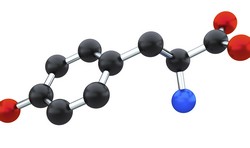Protein interaction in real-time
Proteins are key players in most cellular processes and often mediate their functions through interactions with other proteins. As a result, methods for studying protein-protein interactions within cells are highly desirable. Towards this goal, the EU-funded KINASE CROSSLINKING (Capturing kinase-substrate pairs in intact mammalian cells by using unnatural amino acid mutagenesis and photocrosslinking) initiative proposed the introduction of photon-activated amino acids into proteins to study their interaction with other molecules. After ultraviolet irradiation, these amino acids can crosslink the protein with its substrate. Researchers were particularly interested in kinases, the enzymes that phosphorylate proteins and have an instrumental role in transduction pathways. As a first step, they developed a novel versatile expression system that enabled the recombinant production of proteins, genetically modified with photon-activated derivatives of tyrosine. To maintain protein structure, scientists screened several positions throughout the protein kinase, both within the catalytic pocket and in its proximity, for their suitability to incorporate the crosslinker. As proof of principle they studied the interaction between the class B G-protein coupled receptor (GPCR) corticotropin releasing factor receptor type 1 (CRF1R) and its peptide ligand Urocortin-I (Ucn1). Introduction of the photo-activated amino acid into CRF1R led to the elucidation of the molecular determinants responsible for the ligand-mediated GPCR activation. By altering the position of the photon-activated amino acids, researchers obtained a panoramic map of the peptide binding pocket as well as structural insight of the receptor itself. Given the fact that GPCRs are major pharmacological targets, the generated information will help understand GPCR function, and develop new drugs. Future plans of the consortium include the application of the method to study the interaction of NF-kb signalling components. Overall, the generated method allows for real-time direct assessment of protein-ligand interactions within cells and has the potential to complement crystallography data on protein structure and function.







